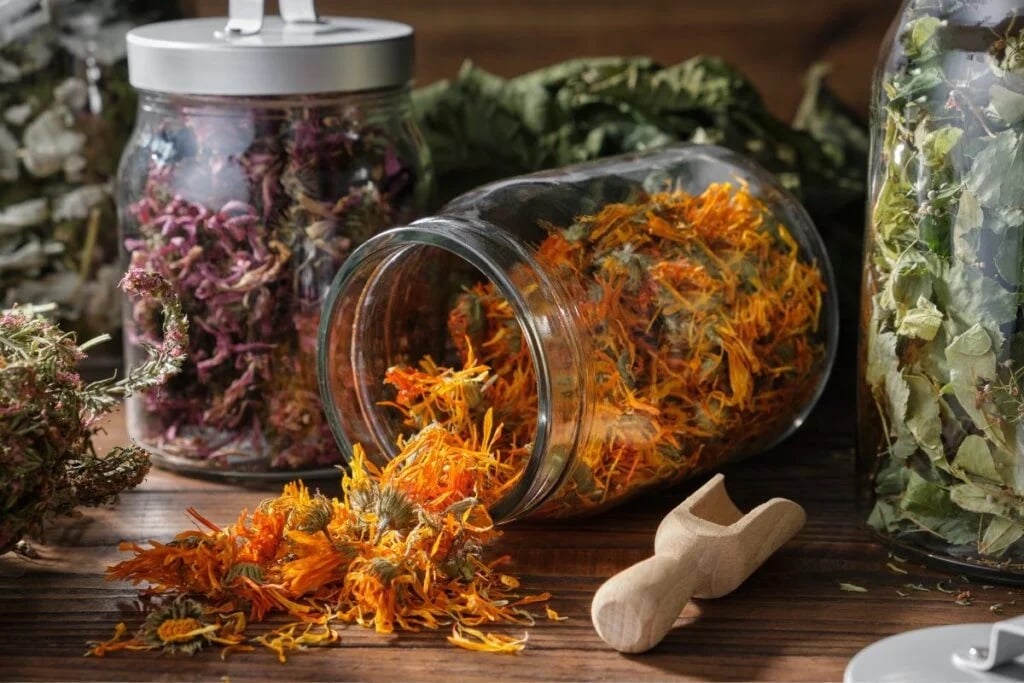Mate tea, or yerba mate tea, is a fragrant and invigorating beverage made from the leaves and stems of the yerba mate plant (Ilex paraguariensis). It is the national drink of Argentina and Uruguay and is also popular in Paraguay, Brazil, Chile, eastern Bolivia, Lebanon, and Syria. As well, we also tell you what includes yerba mate tea benefits.
The yerba mate plant (Ilex) belongs to the Aquifoliaceae family, which includes around 400 known species. It grows widely, with most species being evergreen shrubs or small trees with simple leaves. These plants have individual or clustered, yellowish, or white flowers. The plant has a pleasant fragrance. It forms a red or black drupe fruit, which is toxic to most animals, including humans.
Harvesting and Drying Yerba Mate in Plantations
The first leaf harvest takes place five years after planting. If plantations are managed sustainably, the leaves and stems are harvested once every three years. In other plantations, the shrubs are cut down every two years under intensive cultivation. The harvested mate is transported to specialized drying facilities, where it is dried at extremely high temperatures in technical baskets and periodically shaken in cycles. The machine crushes dried leaves and stems into smaller pieces.
Authentic yerba mate consists of three key components:
- Stems—rich in beneficial nutrients.
- Leaves—providing the drink with color and bitterness.
- Fine Dust—indicating that producers correctly followed all yerba mate processing techniques, preserving the drink’s beneficial properties.
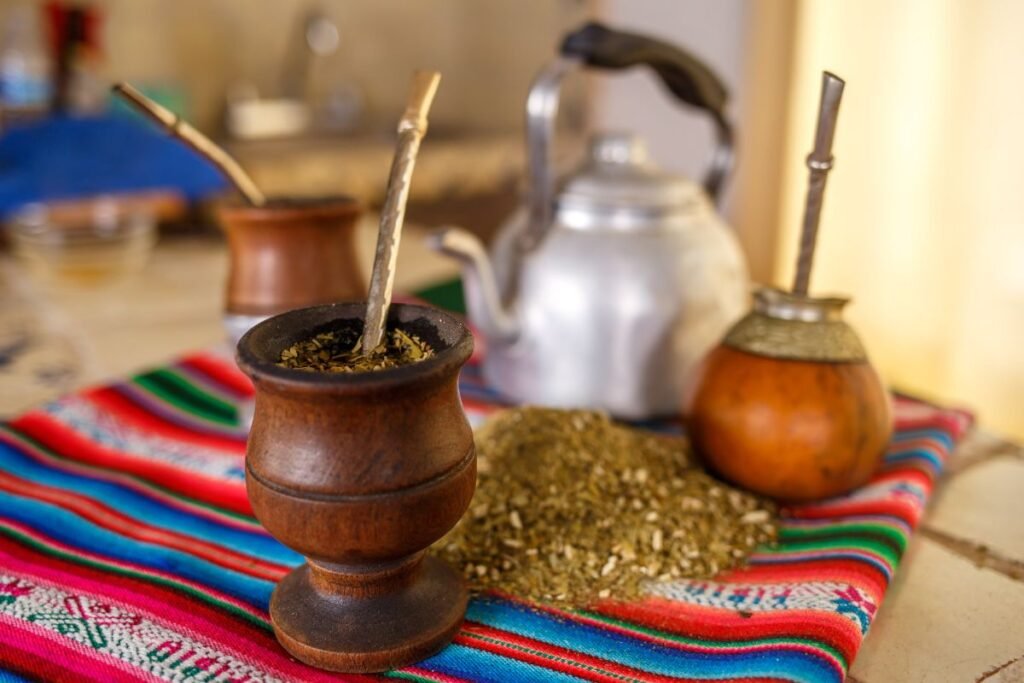
7 Yerba Mate Tea Benefits
Mate tea contains antioxidants, caffeine, and essential nutrients. Some studies suggest yerba mate tea can enhance physical performance, boost energy levels, and even aid weight management. Its popularity is rapidly growing worldwide. Folklore says that mate combines the strength of coffee, the health benefits of tea, and the joy of chocolate.
Here are the 7 key health benefits of mate tea:
Rich in Antioxidants and Nutrients
Mate tea contains several beneficial plant compounds:
- Xanthines are stimulant compounds, including caffeine and theobromine (they are also found in tea, coffee, and chocolate).
- Caffeoyl derivatives are the key antioxidants, contributing to its health-promoting properties in mate tea.
- Saponins are bitter compounds with anti-inflammatory and cholesterol-lowering effects.
- Polyphenols—a large group of antioxidants known to reduce the risk of various diseases.
One scientific study found that mate tea has antioxidant properties comparable to green tea. Additionally, it contains essential micronutrients such as vitamin C, thiamine, riboflavin, and vitamin B6, along with minerals like potassium, calcium, magnesium, phosphorus, manganese, and iron.
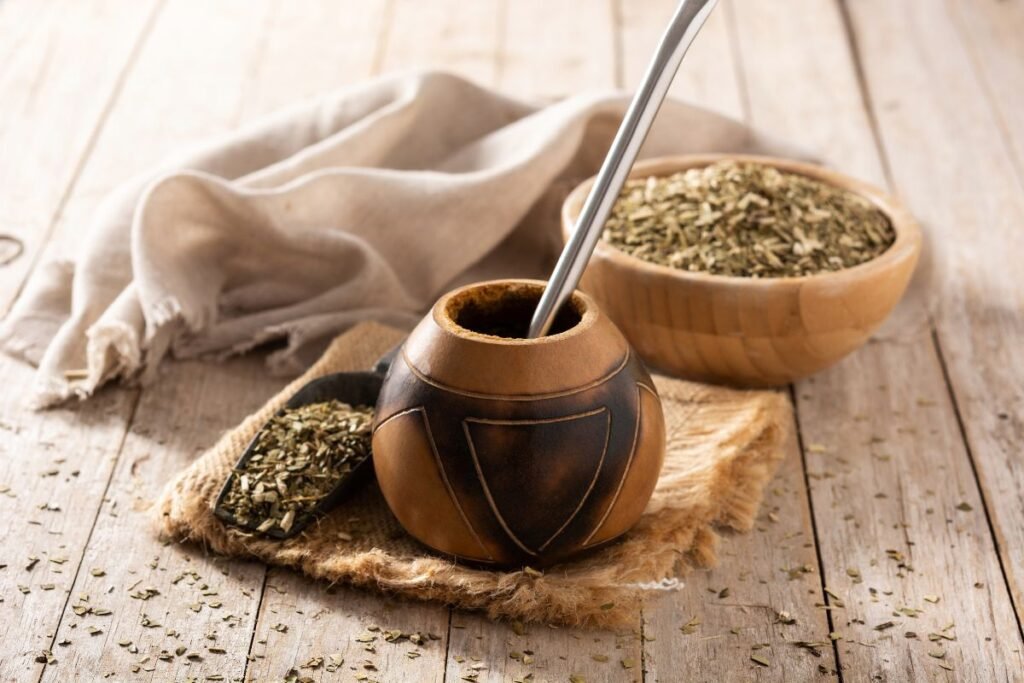
May Boost Energy and Improve Mental Focus
A cup of mate tea contains as much caffeine as an equivalent amount of coffee. Like other caffeinated beverages, it can increase energy levels and reduce fatigue. Caffeine influences specific molecules in the brain, enhancing mental focus and alertness. Studies indicate that caffeine can improve concentration, attention, and reaction time. Regular drinkers of mate tea report feeling more alert, like coffee, but without the jitteriness.
May Enhance Physical Performance
Older studies suggest that caffeine improves muscle contractions, reduces fatigue, and may enhance physical performance by up to 5%. Since mate tea contains caffeine, athletes may experience better physical endurance. A 2014 study found that individuals who consumed 1 gram of ground yerba mate leaves before moderate-intensity exercise burned 24% more fat. The study suggests mate tea may support improved athletic performance and fat metabolism.
May Protect Against Infections
Yerba mate may help prevent bacterial, parasitic, and fungal infections. Laboratory studies have revealed that high doses of yerba mate extract can deactivate Escherichia coli (E. coli)—a bacteria responsible for food poisoning symptoms such as stomach cramps and diarrhea.
May Aid in Weight Loss
Some studies suggest yerba mate may help reduce body weight, abdominal fat, and body mass index (BMI). Research indicates that it decreases the total number of fat cells and reduces the fat stored within them. A 2015 study involving overweight individuals found that those who consumed 3 grams of yerba mate powder daily lost an average of 0.7 kg (1.5 lbs). Additionally, their waist and hip circumference decreased by 2%, indicating belly fat reduction.
May Lower Blood Sugar Levels
Yerba mate may help regulate blood sugar levels and reduce complications associated with diabetes. A 2011 study observed that individuals with type 2 diabetes who drank 330 ml of mate tea 3 times/day experienced significant reductions in fasting blood sugar levels and hemoglobin A1c (a marker of long-term blood sugar control) after two months.
May Reduce the Risk of Heart Disease
Yerba mate contains antioxidant compounds such as caffeoyl derivatives and polyphenols, which may help protect against heart disease. Studies indicate that mate tea lowers cholesterol levels. In one study involving 119 overweight women, those who consumed mate tea daily for 12 weeks experienced a significant decrease in total cholesterol and LDL (“bad”) cholesterol. Additionally, yerba mate significantly reduced triglyceride levels while following a low-calorie diet.
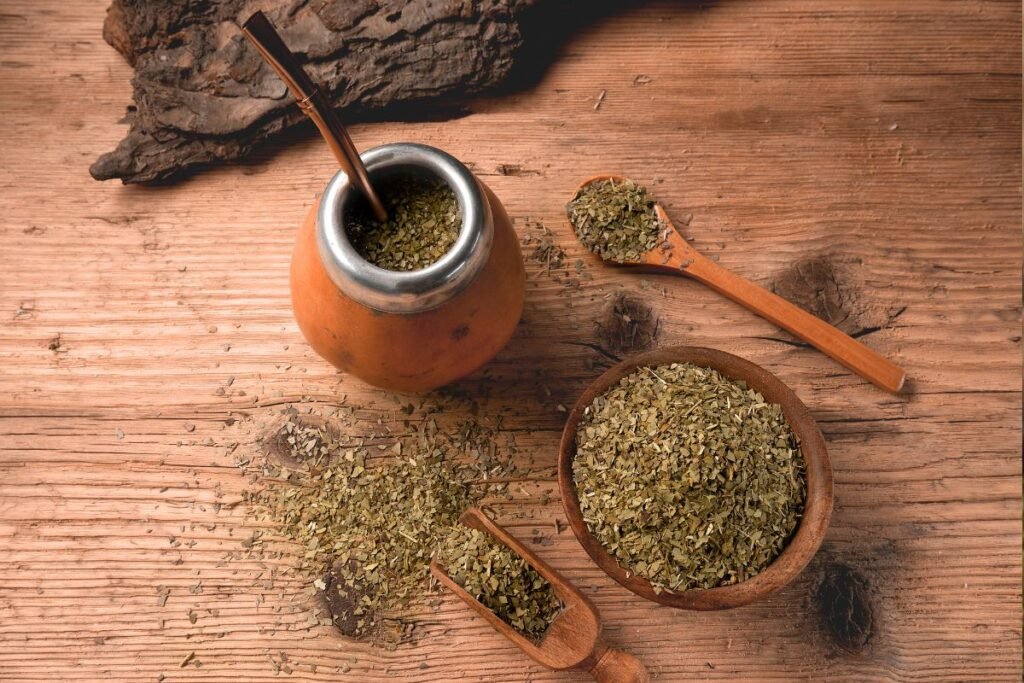
Preparing Mate Tea
There are two main methods of preparing mate tea. The most traditional way is brewing tea in a specially designed container called a calabash gourd (calabaza). People traditionally sip the tea through a silver straw with a filter at the end, known as a bombilla.
Traditional Mate Tea Preparation
You will need:
- Yerba mate leaves (about 200-300 g, or as preferred)
- Calabash gourd (for brewing)
- Bombilla (a silver straw with a filter)
Steps:
- Fill the ⅔ calabash gourd with yerba mate leaves.
- Cover the open part with your hand and shake well.
- Tilt the gourd at a 45° angle and insert the bombilla into the pile of leaves.
- Pour a small amount of cold boiled water over the leaves.
- Place the gourd on a flat surface and fill it with hot water (about 70 °C/160°F).
You can reuse the same yerba mate leaves up to 20 times!
European-Style Mate Preparation
This method is similar to the traditional one but requires only a bombilla—no gourd needed. You can use any cup or mug.
Steps:
- Add yerba mate to a cup, adjusting the amount based on your desired strength. There are no strict rules!
- First, pour a small portion of room-temperature boiled water over the leaves—just enough to cover them. Let the tea sit for about a minute until it absorbs the water and expands.
- Then, pour in hot water (70-80°C/160-175°F) until the cup is full or to your preference. Again, there are no strict rules here!
- Insert the bombilla into the cup and enjoy your mate.
This preparation allows for multiple infusions, though not as many as the traditional method. The longer the tea steeps, the stronger the flavor. With each additional infusion, the tea will become weaker. If the leaves no longer float, it means they have already released their flavor and nutrients.
Although mate tea is traditionally consumed hot, it is also served cold for a refreshing drink in warmer climates.
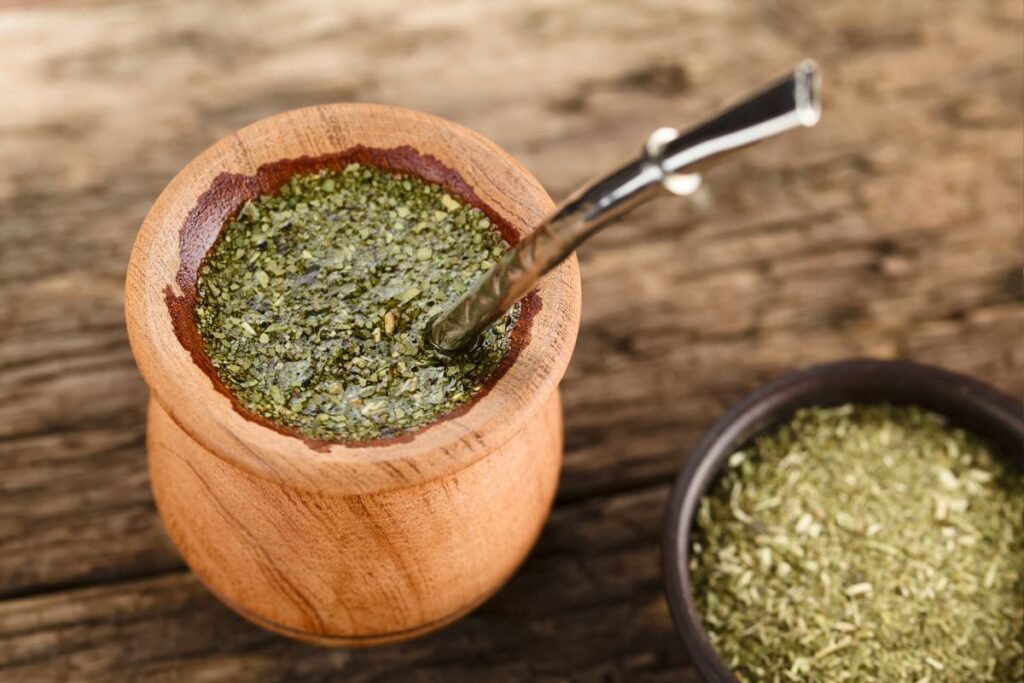
Potential Side Effects of Mate Tea
Yerba mate is generally safe for healthy adults when consumed occasionally. However, regular and excessive consumption may lead to potential side effects.
Increased Cancer Risk. Studies suggest that long-term, high consumption of mate tea may increase the risk of upper respiratory and digestive tract cancers. One possible explanation is that yerba mate contains polycyclic aromatic hydrocarbons (PAHs)—known carcinogens. However, some compounds in mate tea may have protective effects against other types of cancer. Moderation is key when consuming yerba mate.
Caffeine-Related Side Effects. Since yerba mate contains caffeine, excessive intake may cause headaches & migraines, high blood pressure, anxiety, nervousness, and insomnia.
Risks for Pregnant and Breastfeeding Women. Pregnant women should limit yerba mate consumption—or avoid it entirely. Excessive caffeine intake may increase the risk of miscarriage and preterm birth. Breastfeeding mothers or children should refuse to drink yerba mate tea.
Interaction with Medications. Yerba mate contains compounds with monoamine oxidase inhibitor (MAOI) activity. MAOIs are known for treating depression and Parkinson’s disease. If you take MAOI medications, consult a doctor before consuming yerba mate.
If you have heart conditions or take medications affecting heart function or blood circulation, speak with your healthcare provider before drinking yerba mate.
Sources and Research:
- https://pubmed.ncbi.nlm.nih.gov/32588612/
- https://www.ncbi.nlm.nih.gov/pmc/articles/PMC5872613/
- https://www.ncbi.nlm.nih.gov/pmc/articles/PMC8868397/
- https://pubmed.ncbi.nlm.nih.gov/15161234/
- https://www.ncbi.nlm.nih.gov/pmc/articles/PMC8622869/
- https://pubmed.ncbi.nlm.nih.gov/27612937/
- https://pubmed.ncbi.nlm.nih.gov/20492310/
- https://pubmed.ncbi.nlm.nih.gov/23573201/
- https://www.ncbi.nlm.nih.gov/pmc/articles/PMC4213371/
- https://www.ncbi.nlm.nih.gov/pmc/articles/PMC4190939/
Associative photos © Canva.

